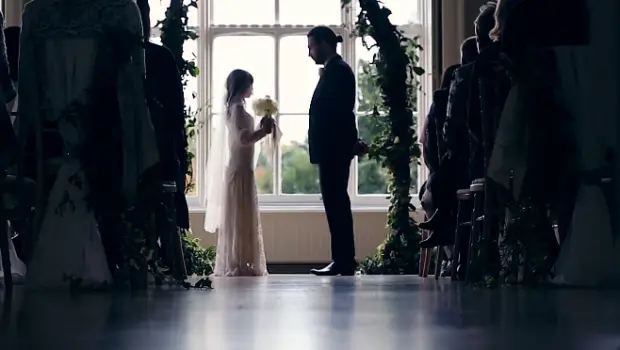WHAT NO ONE TALKS ABOUT
Argentina has more than 132 thousand cases of child marriage and surpasses Qatar
FEIM conducted a study in Argentina on child marriage of women under 18 years of age and discovered that 4.7% are married or cohabiting.

The Foundation for the Study and Research of Women (FEIM), conducted a study in Argentina on child marriage of underage women. As a result, the researchers discovered that 4.7% of girls and adolescents who married or cohabited are under 18 years of age.
FEIM is an Argentine NGO that was created in 1989 by a group of professional women specialists in gender to improve the social, labor, educational, legal, political, economic and health conditions of women. Mabel Bianco, an Argentine doctor and director of the organization, was interviewed by Infobae and explained that the study seeks to show the number of “Argentine girls who cannot choose to continue studying and develop their lives because they enter into these marriages or unions too early.”
In total, the report counted 132,000 adolescent women in Argentina, between 14 and 18 years old, who are married or living with men between 10 and 15 years older than them. Bianco says that by law "until the age of 18 you cannot get married, but if a judge or parents authorize it, the marriage can take place."
Likewise, Bianco clarified that many adolescents are not married to men, but rather live together and since it is outside the law, it is very difficult to detect them. The director of FEIM regrets this because "the girls have nothing to hold on to. Therefore, I insist, we must do prevention and detect it beforehand."
Preventing child marriage
For the doctor, schools and local services that work with children are fundamental to prevent child unions and marriages, because "they can go to the houses and see what is happening. For example, a teacher may notice that a girl stops going to class, that days go by and she doesn't go, so they approach her to detect what is happening, where it happens and to provide support," she explained.
FEIM assures that child marriage is always forced because girls are too young to be psychologically prepared to make this decision in a conscious and informed way. In addition, Bianco says that child marriage increases "structural inequalities, the right to education, sexual rights, the possibility of choice, of living a life without violence and the capacity for economic autonomy are violated."
The Argentine provinces with the most cases
FEIM discovered in its work that child marriage and cohabitation in Argentina are higher than in Qatar. The highest rates are found in the Northeast (NEA), Northwest (NOA) and Patagonia regions of the country. Misiones, 7.2%, Chaco, 6.9%, and Formosa, 6.4%, are the provinces leading the table; followed by Santa Fe and Entre Ríos, 5.4%; Corrientes and Santiago del Estero, 5.3%; finally, Salta, 5%; and La Rioja, 4.9%. Bianco explains that in these places the following factors weigh heavily: economic, cultural and religious, but adds that in communities and rural areas far from the cities, child marriage is naturalized.
For the study, the most unbalanced factor is the economic one, because in poor neighborhoods early unions, early pregnancies and school dropouts are more frequent. As a consequence of this, women depend economically on their older partners. In addition, the foundation explains that in Argentina when girls and adolescents become pregnant “they are excluded and forced to have precarious, poorly paid jobs and not only do they persist in poverty, but they often reach higher levels of poverty than their own mothers, further increasing the gender gap.” To conclude, Bianco reflected: “We have to become aware that this happens in the country, but not to punish, but to prevent, so that these girls can choose, continue in school, develop and make their life without being subjected from an early age to a union that ruins their lives.”

 IHRO NEWS
IHRO NEWS